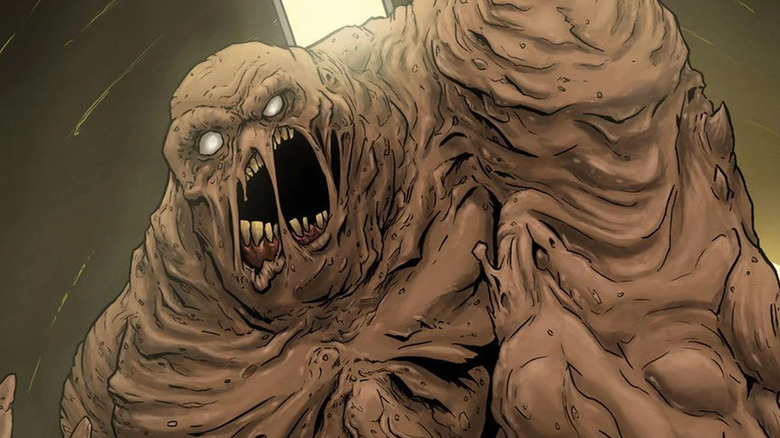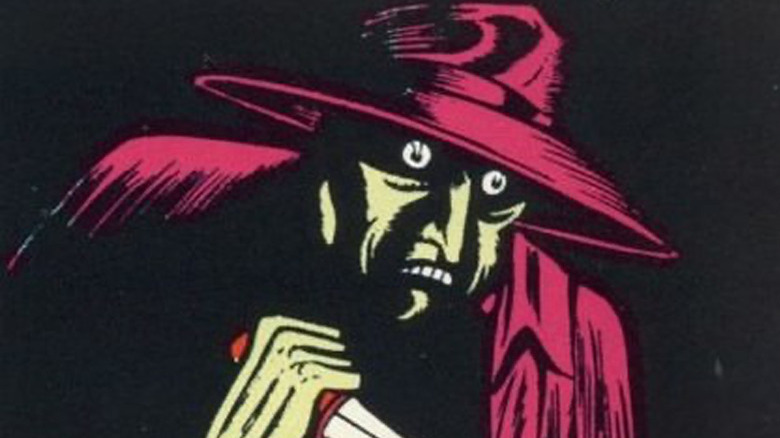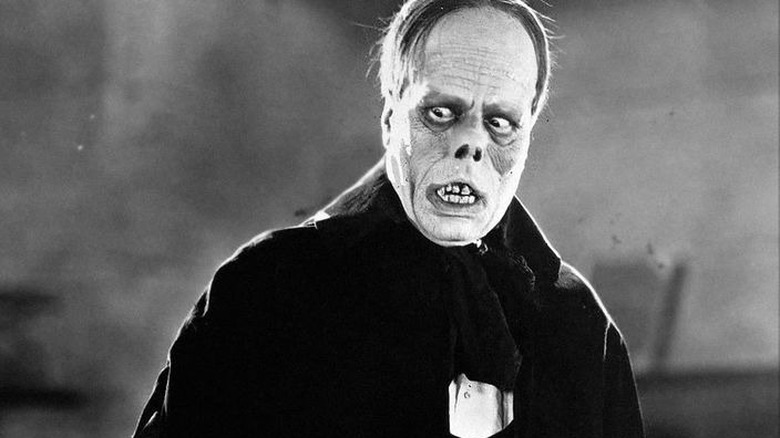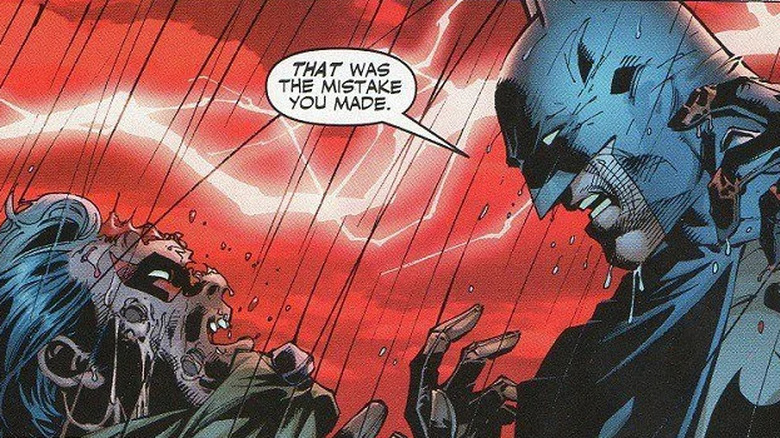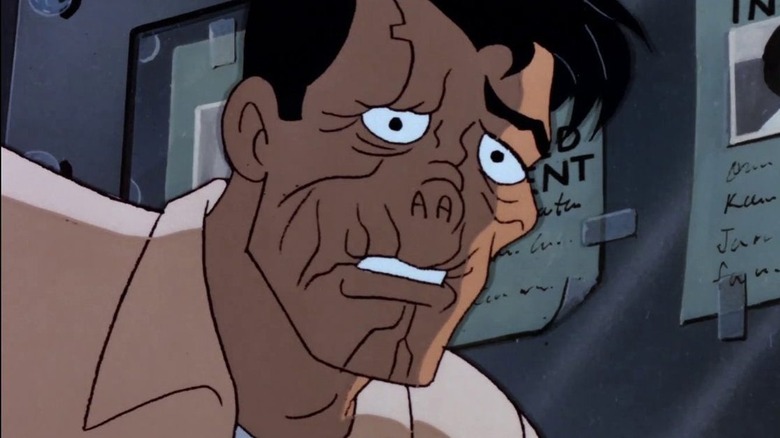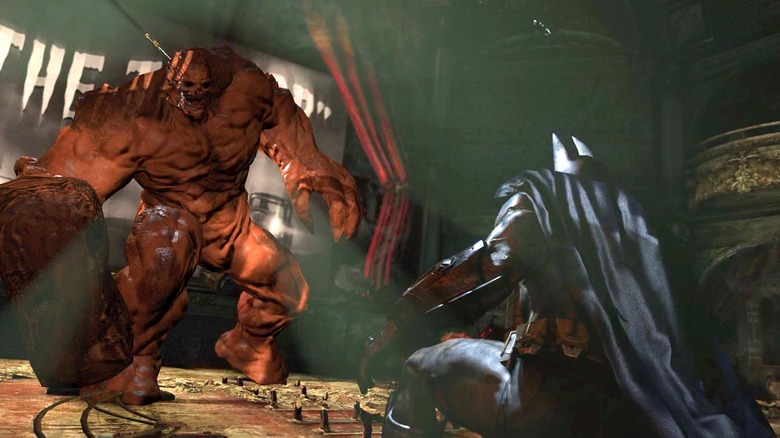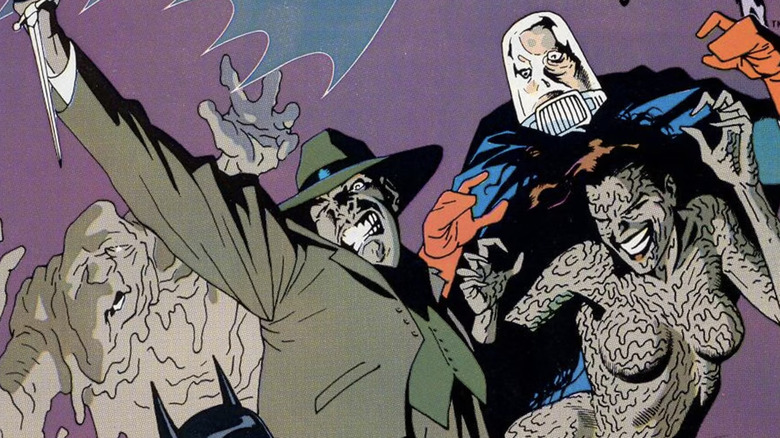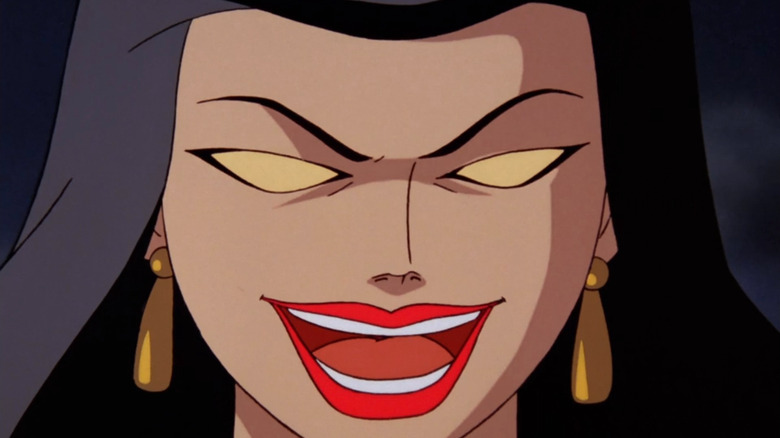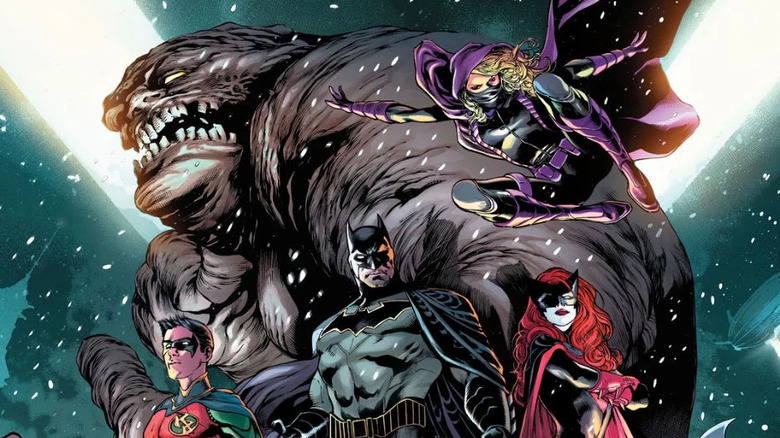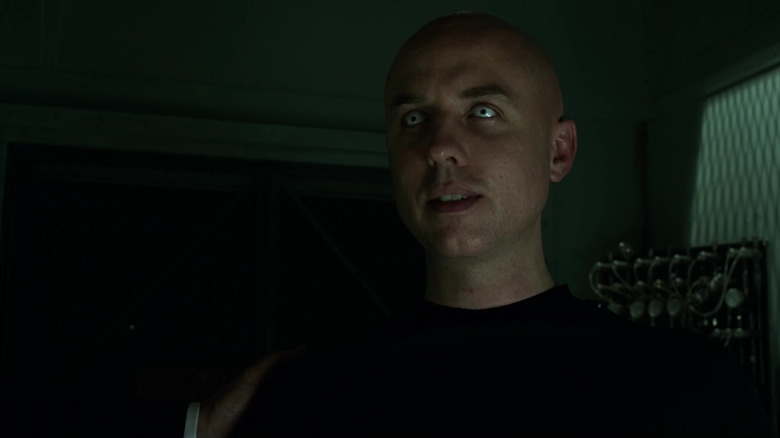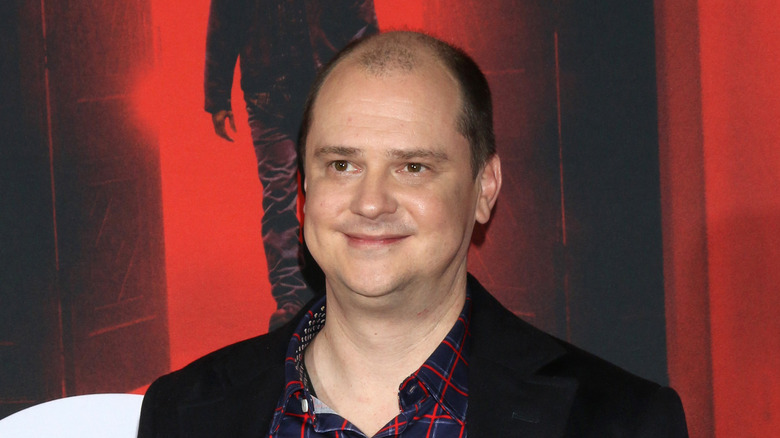The Truth Behind Clayface, One Of Batman's Most Tragic Villains
Clayface, even amongst Batman's famed rogues' gallery, is a very complex character, both in terms of design and backstory. Though he's gone by a few different names, the character's main alter-ego is that of struggling horror actor Basil Karlo. Upon learning the horror film he once starred in is to be remade without him in the lead role, Karlo seeks revenge. He dons the identity of his character Clayface from the film and eventually ends up in the crosshairs of the Dark Knight.
However, this version lacked the shapeshifting abilities that became synonymous with the next man to take up the mantle, Matt Hagen. After being exposed to one of DC's many radioactive protoplasms, Hagen's body became a literal lump of ever-shifting clay. This is the version most fans are familiar with, and usually the main basis for iterations of Clayface that are adapted in video games or on television.
With the recent rumors about horror director Mike Flanagan expressing interest in bringing the character to the big screen — and although he's debunked the idea that it's officially moving forward, we definitely think it should — it's a good time to be a Clayface fan. As more and more people are likely inquiring about the character, here's the truth behind Clayface, one of Batman's most tragic villains.
He was an early Batman rogue
Batman truly boasts one of the best rogues' galleries in all of comic book history, populated by some truly memorable characters. Even in his earliest stories, you have The Joker, Hugo Strange, Catwoman, The Scarecrow, The Penguin, and most relevant here, Clayface. It speaks to the quality of these villains that, sans a few, all of them have endured and made it into nearly all of Batman's subsequent eras.
First introduced in Detective Comics #40 back in 1940, the original version of the character was a tad different than the one fans are now used to. Unlike his shapeshifting successors, this original iteration is a normal man simply using the Clayface name as a threatening moniker. The man in question is Basil Karlo, a B-movie actor best known for his role in a fictitious movie known as "Dread Castle." Upon learning that he will be replaced in an upcoming remake, Karlo snaps and begins killing the actors per their order of demise in the original film. These murderous machinations draw the attention of Batman and Robin who, in typical fashion, dispatch Clayface by the final page.
This formative version of Clayface would resurface a few issues later, this time attempting to harm Julie Madison, Bruce Wayne's fiancée. Though the character has largely been retooled since this era, many aspects of this original version have been retained in subsequent reimaginings.
He has roots in classic horror films
Batman and horror films have always gone hand-in-hand, with many of his villains taking a few cues from the genre. Many might already be aware that The Joker was heavily influenced by Conrad Veidt in the 1928 silent film "The Man Who Laughs."
The horror genre would prove to be an even bigger influence on other villains, especially Clayface and his in-universe origins. Not only was the character of Basil Karlo a horror film actor, but even his name is designed to evoke famous actors of horror's golden era. Per a quote from Bob Kane's book "Batman and Me," the name of Basil Karlo was a fusion of Boris Karloff and Basil Rathbone. Not only that, but the character's original design was directly lifted from the 1925 silent film version of "The Phantom of the Opera" starring the legendary Lon Chaney. This is evident from the mask and gothic clothing that Karlo wears in his first appearance, very much in line with Chaney's on screen wardrobe.
While his design was heavily altered in later appearances, the horror influences have never left the character. All we can say is, Mike Flanagan couldn't have picked a better Batman villain to set his sights on for a possible horror-tinted adaptation.
He impersonated Jason Todd once
"Batman: Hush," for many longtime comic readers, is a definitive Batman story, right up there with "The Killing Joke" and "The Long Halloween." Created by writer Jeph Loeb and artist Jim Lee, the story sees Batman caught up in the machinations of a new enemy known only as Hush.
The multi-issue story sees Batman go up against a villain with a very personal vendetta against the Dark Knight. Over the course of the saga, almost every one of Batman's major enemies — Joker, Harley Quinn, Killer Croc, and Poison Ivy — factor into Hush's plan in some way. Partway through "Hush," we're baited with an impressively effective red herring for Hush's identity in the form of Jason Todd.
Todd, the second Robin, was killed previously in the "Death in the Family" storyline and had not been seen since. However, what was originally first believed to be Batman's faithful ward back from the dead, was eventually revealed to be Clayface posing as Jason. It's not uncommon for Clayface to impersonate someone for his own (or in this case someone else's) benefit, but this was a truly loathsome move. Following this, Jason Todd would resurrect for real following the universe-bending events of "Infinite Crisis," taking on the moniker of Red Hood.
His Batman the Animated Series debut was disturbing
"Batman: The Animated Series" reinvented the wheel with quite a few of Batman's villains, many of whom received a much needed facelift. The most famous example is likely Mr. Freeze, with the show retooling his backstory to the more heartbreaking narrative fans are now familiar with.
However, this also extends to Clayface, with his first episode, "Feat of Clay," serving as a morbid reintroduction to the classic character (voiced by Ron Perlman). This version of the character serves as an amalgamation of both Basil Karlo and Matt Hagen, with the character retaining the name of the latter. Here, though, his backstory is that Hagen was horribly disfigured in an on-set accident, which landed him in the crosshairs of Roland Daggett. Preying on Hagen's situation, Daggett's gotten him hooked on a chemical compound known as Renuyu, a substance that allows Hagen to remold his face. Unfortunately, following a run-in with Daggett's goons, Hagen is smothered in Renuyu, turning him into the hulking Clayface.
In the episode's closing moments, Hagen loses all sense of his former identity, the horror of which is only heightened when Batman displays images of Hagen's old roles on multiple TV monitors. We're then treated to some sickeningly goopy animation as Clayface switches between multiple different forms in just a few short moments. Even in the world of children's animation, the character of Clayface is still imbued with the macabre influences from the character's golden age genesis.
He was the final boss in Arkham City
In 2009, the folks at Rocksteady Studios saw fit to unleash "Batman: Arkham Asylum" on the gaming world. The game was such a success that just two years later, Rocksteady was at it again with a bigger and badder sequel, "Batman: Arkham City."
The game sees Batman traverse Arkham City, a rundown section of Gotham converted into a prison enclosure populated by residents of the Asylum and Blackgate Prison. Over the course of one wild night, Batman must uncover the machinations of Dr. Hugo Strange while finding a cure for The Joker's tainted blood. Following the events of "Arkham Asylum," The Joker was left in an emaciated state due to overdosing on Venom formula, basically on the verge of death.
In the game's final section, Batman must head to an old movie theater to confront The Joker, who is holding Talia al Ghul hostage. Talia appears to kill Joker with her sword before the real Joker shoots her from a balcony, revealing the other one to be a fake. In a great twist, the second Joker is revealed to be none other than Basil Karlo, aka Clayface. When Batman asks why Clayface would align himself with The Joker, the hulking behemoth simply says, "Easy. The role of a lifetime!" It's not only a great twist but it leads to an immensely satisfying final boss fight dedicated to dispatching Clayface and his clay minions.
There have been a few Clayfaces
The Clayface moniker has actually belonged to more than just one person throughout DC Comics history. This is not uncommon, especially in the world of DC Comics, as many heroes and villains have passed their legacies onto others as years have gone by. Whether it's Jaime Reyes taking over for Ted Kord or Wally West picking up where Barry Allen left off, DC loves itself a legacy.
We've already mentioned both Basil Karlo and Matt Hagen, but they aren't the only ones to don the identity of Clayface in the DC Universe. There was Preston Payne, a scientist who used Clayface's DNA as a way to cure his illness but ended up becoming a clay monster as well. Then there was Sondra Fuller, a Strike Force Kobra member who used their resources to become Lady Clay. This resulted in an alliance known as the Mud Pack, which consisted of Fuller, Karlo, and Payne joining forces.
From there, Karlo ended up using the Mud Pack's DNA to enhance his own clay abilities, while Payne and Fuller wound up having a child together. Their son Cassius ended up being born with shapeshifting powers of his own, once again adding to the Clayface legacy.
He's cheated death multiple times
As we all know by now, whether it's DC or Marvel, death in comics is more of a temporary ailment. This revolving door in the afterlife seemingly applies to both the noblest of heroes to the vilest of villains. Batman's foes are no stranger to flipping death the bird, with many of them coming back to life in less time than it takes to refuel the Batmobile.
It's here we once again turn to "Batman: The Animated Series," wherein Clayface is able to cheat death on two separate occasions. The first is in his two-part debut episode, "Feat of Clay," after his supposed demise in his confrontation with Batman. Following his electrocution, we see Batman in the cave fiddling with a remaining sample of clay taken from Matt Hagen's body. The clay seems unaffected by the electricity, meaning that his death was nothing more than a very convincing performance. This is confirmed when we see Clayface, under the guise of a civilian woman, laughing maniacally to close out the episode.
Clayface makes his return in the episode "Mudslide," when he seeks a cure for his clay-based mutation with the help of a smitten doctor. However, at the episode's conclusion, Clayface is sent over a cliff and into the waters below, where he melts away. However, this wasn't enough to keep him down either, as Clayface would return many episodes later in "Growing Pains."
He's been a good guy
As bizarre an occurrence as it might be, there have been several instances of Batman teaming up with one or more of his rogues. Yes, from Halrey Quinn to Mister Freeze to even The Joker, every so often Batman and his enemies have had aligned goals. This includes Clayface, although he's an interesting example as he did it not out of necessity, but out of a genuine desire to change his ways.
Following the events of "DC Rebirth," Batman extends an olive branch to Basil Karlo, giving him a chance to join the Gotham Knights. Desiring a chance to turn his life around, Karlo accepts and is welcomed into the team alongside the other members. This includes Azrael, Batwing, Batwoman, Orphan, Red Robin, and Spoiler, a lovely assortment of Bat Family members and former foes who've changed ethical alignments.
Sadly, due to the actions of the Monster Men, Karlo is turned into a mindless beast and is seemingly shot by Batwoman. This causes as schism within the Gotham Knights, though it's later revealed that Karlo had actually survived and is now powerless. Though it was a brief stint, it was still very cool to see Clayface presented differently, and even looking to do some good in the world.
He's had a few live-action appearances
Considering recent rumblings in regards to Clayface's future in DC's cinematic universe, it's worth noting that the character has appeared in live-action before. A version of Matt Hagan is shown in the opening credits of the "Batman" show from the 1960s, even though Clayface never officially appears.
The Cassius Payne version of the character was then adapted in the early 2000s "Birds of Prey" show as a monster-of-the-week style antagonist. This version is far from the most faithful, especially with actor Kirk Baltz wearing some cheap latex prosthetics on par with a Spirit Halloween costume. His next onscreen appearance on "Gotham" was worlds better, especially with the advancement of CGI on television in recent years. Portrayed by Brian McManamon, this version of Clayface was actually created when Hugo Strange spliced Basil Karlo's DNA with that of an octopus. This version of the character has appearances in both Seasons 2 and 3, often impersonating people, including Jim Gordon, for the benefit of whoever's holding his leash.
Most recently, a new version of the character was used in the third season of "Pennyworth," the prequel television series centered on Alfred Pennyworth's early years. Here we meet Virginia Devereaux, played by Lorraine Burroughs, who possesses the ability to mimic the appearance of anyone she meets.
Mike Flanagan wants to adapt him for the big screen
There are many talented directors making a name for themselves in the modern horror landscape, but few are doing it like Mike Flanagan. After the success of "Oculus" in 2014, Flanagan really hit the ground running with a slew of hits both on the big and small screen. This includes the hit Netflix series "The Haunting of Hill House" and the adaptation of Stephen King's "Doctor Sleep." The man's style is equal parts cerebral and gothic, resulting in some truly chilling material that'll satiate the most rabid of horror fanatics.
Very recently, however, Flanagan turned some heads when it was rumored that he had pitched a Clayface feature film to Warner Bros. Clayface's backstory is, of course, heavily predicated on heartbreaking tragedy and otherworldly horror, which are two things that Flanagan excels at. Flanagan himself tweeted in 2021 that he'd love to do a standalone Clayface movie as a "horror/thriller/tragedy." One need only watch "Oculus" or "The Haunting of Hill House" to see his mastery of these elements at play.
The director took to Twitter again after those rumors broke in March 2023, writing, "The news ... is entirely speculative. When or if something like that ever becomes real, I promise I'll tell you guys." Given the box office and awards success of Todd Phillips' "Joker," we can only hope Warner and DC will take a chance on another villain-centric film before too long.
